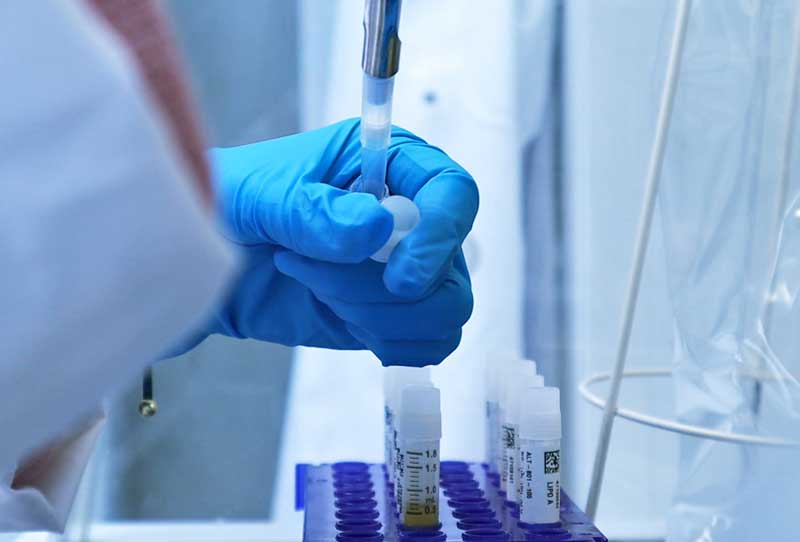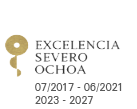
2025/11/12
An international study led by CIC bioGUNE establishes new reference values to assess cardiovascular risk
A study published in eBioMedicine reveals that, through the analysis of more than 31,000 serum and plasma samples using nuclear magnetic resonance (NMR), researchers have defined age- and sex-specific reference values for 112 lipoprotein parameters. These new benchmarks improve cardiovascular risk prediction and bring us closer to more precise and personalized medicine.
An international research team led by Óscar Millet and José M. Mato from the Precision Medicine and Metabolism Laboratory at CIC bioGUNE, member of BRTA, in collaboration with the CIBERehd Network, has taken a decisive step toward more accurate cardiovascular medicine.
The study, published in eBioMedicine, analyzed over 31,000 serum and plasma samples from individuals across five countries, using nuclear magnetic resonance (NMR) spectroscopy to obtain a detailed view of blood lipids.
Through the innovative B.I.LISA™ platform, the team quantified 112 lipoprotein parameters, going far beyond conventional indicators such as total cholesterol or triglycerides. The main goal was to establish age- and sex-specific reference values and assess their usefulness in predicting cardiovascular disease (CVD) risk more accurately than traditional methods.
The work is the result of a broad international collaboration among institutions from Europe, America, and Oceania, including: CIC bioGUNE (Spain), Murdoch University and the Australian National Phenome Centre (Australia), the Medical University of Graz (Austria), the University of Zaragoza and IIS Aragón (Spain), Imperial College London (United Kingdom), the University of Valle (Colombia), Cedars-Sinai Medical Center (USA), the University of Beira Interior (Portugal), Bruker Biospin GmbH (Germany), and the Fondazione IRCCS Ca’ Granda together with the University of Milan (Italy).
The results show that lipid profiles change non-linearly with age, revealing critical metabolic inflection points, around ages 44 and 60 in women, and around 60 in men. These transitions may correspond to stages where cardiovascular risk accelerates or changes significantly.
The study also examined how factors such as obesity, hypertension, and diabetes modify these lipoprotein profiles. VLDL and HDL particles were found to be the most sensitive to these metabolic factors. Moreover, NMR-derived parameters demonstrated a greater ability to distinguish cardiovascular risk compared with conventional clinical measurements.
For the first time, international reference values for NMR-derived lipoprotein parameters have been established, enabling a more personalized assessment of cardiovascular risk that considers each individual’s age, sex, and metabolic condition.
The research introduced advanced statistical models (QGAM) to estimate smooth and continuous trajectories of these parameters and to identify metabolic “inflection points”, moments when lipid metabolism changes most rapidly.
According to the research team, these findings reinforce the concept that aging and cardiovascular diseases share common metabolic pathways, which could inform the design of more effective prevention strategies.
Furthermore, the study highlights the clinical potential of benchtop NMR spectrometers, which could facilitate the integration of this type of analysis into hospitals and health centers, making data-driven precision medicine more accessible.
Reference: Ricardo Conde, Rubén Gil-Redondo, Maider Bizkarguenaga, Samantha Lodge, Phillip Nitschke, Ángela de Diego, Beatriz González-Valle, Jennie Hui, Michael L. Hunter, Bu B. Yeap, Ana Cenarro, Virginia Lope, Hansjörg Habisch, Christoph Haudum, Nicolas Verheyen, Barbara Obermayer-Pietsch, María José Zaro Bastanzuri, María Reyes González Fernández, Daniel Fernández-Bergés, Ane Miren Salazar, Maria Pilar Sorando-Fernandez, Susana Meijide, Gonzalo Hernandez, Eunate Arana, Maria Luisa Seco, Adriana Sousa, Nádia Oliveira, Ignacio Verde, Tobias Madl, Miguel Unda-Urzaiz, Arkaitz Carracedo, Tammo Diercks, Adela Castelló, Hartmut Schäfer, Manfred Spraul, Claire Cannet, Nieves Embade, Luca Valenti, Fernando Civeira, Shelly C Lu, Elaine Holmes, Julien Wist, Jeremy K Nicholson, José M Mato and Oscar Millet. Age and Sex Specific Lipoprotein Profiles in General and Cardiometabolic Population Cohorts. EBioMedicine. DOI: 10.1016/j.ebiom.2025.106021.
About CIC bioGUNE
The Centre for Cooperative Research in Biosciences (CIC bioGUNE), member of the Basque Research & Technology Alliance (BRTA), located in the Bizkaia Technology Park, is a biomedical research organisation conducting cutting-edge research at the interface between structural, molecular and cell biology, with a particular focus on generating knowledge on the molecular bases of disease, for use in the development of new diagnostic methods and advanced therapies.
About BRTA
BRTA is an alliance of 4 collaborative research centres (CIC bioGUNE, CIC nanoGUNE, CIC biomaGUNE y CIC energiGUNE) and 13 technology centres (Azterlan, Azti, Ceit, Cidetec, Gaiker, Ideko, Ikerlan, Leartiker, Lortek, Neiker, Tecnalia, Tekniker y Vicomtech) with the main objective of developing advanced technological solutions for the Basque corporate fabric.
With the support of the Basque Government, the SPRI Group and the Provincial Councils of the three territories, the alliance seeks to promote collaboration between the research centres, strengthen the conditions to generate and transfer knowledge to companies, contributing to their competitiveness and outspreading the Basque scientific-technological capacity abroad.
BRTA has a workforce of 3,500 professionals, executes 22 % of the Basque Country's R&D investment, registers an annual turnover of more than 300 million euros and generates 100 European and international patents per year.
See a large version of the first picture





